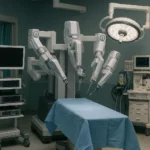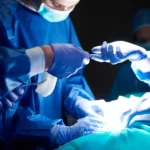Regenerative Medicine: Healing Beyond Boundaries
While living in the world, one meets chronic pain, progressive degenerative diseases, and futile therapeutics, many of which are often encountered in a dead-end situation, to provide the sense of regeneration. From the reversal of joint damage to the restoration of neurological function, regenerative medicine changes lives, and medical tourism for regenerative therapeutic procedures is being garnered from many areas of the globe.
Consequently, patients are packing their bags for vacation and healing, as international clinics like Minaris Regenerative Medicine shine in the limelight of innovation. So what makes this field of medicine the torchbearer of hope for many? Why do patients go to the other end of the planet to have stem cells or regenerative orthopedics?
Let’s take a look.
Understanding Regenerative Medicine
The core of regenerative medicine is restoring or replacing one or more damaged tissues and organs, using nature’s own ability to heal. Whereas conventional medicine would typically manage the symptoms with long-term chemotherapies or invasive surgeries, the regenerative treatments work on repairing the actual cause of the problem.
It includes therapies such as:
- Stem cell therapy
- PRP (Platelet-Rich Plasma)
- Stem cell transplant
- Exosome therapy
- Tissue engineering
- Gene therapy
In fact, its science has been in stimulating regeneration of cells within the body to build healthier ones to replace damaged ones. Moreover, such Regeneration therapy does not promise to treat; it translates the very possibility of renewal itself.
Why Medical Tourists Are Choosing Regenerative Medicine Clinics Abroad
Indeed, patients increasingly are taking their health journeys into their own hands, traveling abroad to access regenerative therapy of the highest international standards. These medical tourists are not only looking for low-cost options; they are looking for places where systems have declined to offer hope.
Here’s why regenerative clinics are stealing the spotlight:
- Non-invasive or minimally invasive procedures
Additionally, treatments like stem cell treatment and PRP are often outpatient and do not involve the lengthy recovery times of conventional surgeries. - Customized, patient-centric care
Therefore, every patient is different, Regenerative clinics emphasize personalized treatment plans based on the patient’s condition, history and goals. - Access to advanced technology
Top centers like Minaris Regenerative Medicine use cutting-edge platforms and lab protocols to ensure optimal results. - Better outcomes for difficult conditions
In fact, from orthopedic injuries to autoimmune disorders and even cosmetic regeneration, these clinics offer results that are hard to find elsewhere.
The Promise of Innovation: Cutting-Edge Treatments That Work
It may seem like something out of a sci-fi movie, but the therapies made available at regenerative medicine clinics are very much real and they are indeed backed by research.
1. Stem Cell Therapy
Stem cells (generally extracted from bone marrow, adipose tissue or the umbilical cord) are injected into the affected area. These cells can differentiate into other specialised cells and promote regeneration of cells.
This is widely used for:
- Joint repair
- Neurological disorders (like Parkinson’s, MS)
- Sports injuries
- Diabetes-related tissue damage
2. PRP Therapy
Plasma rich in platelets collected from your own blood, processed and reintroduced to hasten healing: regenerative orthopedics favorite, particularly for injuries of tendon, ligament and muscle.
3. Exosome Therapy
Specifically, these are messenger particles released from stem cells that carry proteins and genetic material that encourage other cells to perform their healing function. It is non-cellular but highly potent.
4. Tissue Engineering and Gene Therapy
In advanced scenarios, they help rebuild damaged tissues and overcome faulty genes related to chronic diseases. Clinics like Minaris Regenerative Medicine are also contributing to global research, pushing the boundaries of what is possible in cellular regeneration.
Top Countries Leading the Regenerative Revolution
However, regeneration medicine isn’t equal for all countries. Some countries have marked their position as one of the global leaders in this revolution and have started welcoming international medical-tourists.
- India
India has some of the most inexpensive and state-of-the-art stem cell therapy alternatives. With cities like Delhi, Gurgaon, Noida and Mumbai and within its borders, the clinics here provide quality care and patient education while emphasizing a personalized follow-up, making India the primary choice for regenerative therapies.
- Thailand
Offered with great warmth and congeniality, Thailand is well known for its excellent wellness tourism. Moreover, it has wonderful recovery resorts with some of the best regenerative clinics.
- Germany
Germany is indeed one of the most important contributors to cell-based research and offers some of the most advanced stem cell transplant treatments available within Europe for neurodegenerative and orthopedic ailments.
- Mexico
Specifically, Mexico is situated to the south of U.S. borders, providing unique access to stem cell treatments with less regulatory restraints and less costly prices.
- Turkey
Meanwhile, Turkey is rising fast with world-class infrastructure, JCI-accredited clinics, and specialised doctors in regenerative therapy.
Key Factors Patients Consider Before Choosing a Clinic
Medical tourism is a big decision. So what do patients consider before choosing a regenerative medicine clinic?
- Clinic Reputation and Accreditation
Look for JCI or NABH certifications and global affiliations (like Minaris). Read reviews and check for transparency in success rates. - Doctor Expertise
After all, a great clinic is only as good as its physicians. Patients prioritize those with experience in stem cell therapy, regenerative orthopedics and tissue engineering. - Technology and Research
Furthermore, labs that follow international cell culture standards ensure safety and efficacy. - Post-treatment Support
Patients need long-term follow-up, physiotherapy and check-ins, especially for chronic or degenerative issues. - Clear Pricing
Additionally, no hidden costs, upfront package deals, and assistance with logistics like visas and stay options—these matter.
Cost vs. Care: The Value Medical Tourists Seek
Patients travel abroad for many reasons, but one of the most important is money. Consequently, thousands of dollars can be spent in the US or UK for stem cell treatment that many insurance companies will not reimburse.
Here’s what medical tourists often find abroad:
- India or Thailand: High-quality stem cell transplant starting from $5000 – $8500
- Germany: Advanced cellular therapy with hospital care
- Mexico or Turkey: Mid-range cost with excellent facilities
Moreover, it is not just about cost, Patients get more personalized care, faster appointments and access to therapies not yet available or approved in their home countries.
Risks and Realities: What You Should Know
While regenerative medicine is promising, it is not without its challenges and risks. Medical tourists need to:
- Avoid unregulated clinics making bold claims
- Ensure ethical sourcing of stem cells
- Be realistic: results vary from person to person
- Plan for follow-ups: some treatments need repeat visits or extended rehab
Doing proper research and choosing certified clinics like Minaris Regenerative Medicine ensures you’re safe.
The Future of Regenerative Medicine in Global Healthcare
The world of regenerative medicine is just getting started. With ongoing research into bioprinting, gene editing, and cell-based therapies, the future is exciting.
- Bioprinted joints could replace metal implants
- Cell therapy for Alzheimer’s and Parkinson’s is progressing fast
- Cancer treatments are now exploring immune-regenerative solutions
- AI and robotic integration in regeneration therapy is on the horizon
And the best part? Clinics abroad are not just following trends—they are often leading them.
Why Choose Regimen Healthcare for Regenerative Medicine?
At Regimen Healthcare, we understand that every healing journey is deeply personal. That’s why hundreds of medical tourists trust us to guide them through advanced regenerative medicine treatments across India:
- Access to India’s Top Regenerative Clinics including partnerships with Minaris Regenerative Medicine and other globally acclaimed centers.
- Expert Consultation with Leading Specialists in stem cell therapy, regenerative orthopedics, and cell regeneration therapy.
- Complete End-to-End Medical Travel Support, from treatment plans and visas to accommodation and local assistance.
- Multilingual Coordination Team for international patients to ensure smooth communication.
- Affordable Packages without compromising treatment quality, often 60–80% less expensive than western countries.
Why India is a Top Destination for Regenerative Medicine
As a result, India has emerged as one of the most trusted destinations for medical tourism in regenerative healthcare. Here’s why:
- World-Class Expertise: Doctors trained in the US, UK, Germany, and Japan are leading India’s regenerative care space.
- Advanced Research & Technology: India is a hub for stem cell treatment, cellular regeneration, and clinical innovation.
- Cost-Effective: Treatments are far more affordable than in the West with the same (or better) clinical outcomes.
- Accredited Hospitals: Many Indian hospitals are JCI and NABH-accredited, ensuring international standards of care.
- Global Patient Flow: India welcomes over 2 million medical tourists annually, reflecting its excellence in healthcare.
Conclusion: Regenerative Medicine Knows No Borders—Only Possibilities
Regenerative medicine—a treatment—is more of a healing philosophy. Consequently, patients offer the opportunity of near miracles for those who have tried everything else.
With quality clinics like Minaris Regenerative Medicine setting the standards and countries like India, Germany and Thailand providing affordable high-end care, the world of medical tourism has opened up as never before.
Whether you are looking at stem cell transplant, cell regeneration therapy, or interested in some alternatives to surgery knowing this, probably your first step towards healing may just require a passport stamp.
Because healing knows no borders in modern worlds. And the promise of medicine’s future is simple-it is regenerative.
Are you or a loved one looking for a breakthrough treatment when everything else has failed?
At Regimen Healthcare, we bridge hope with innovation—connecting patients worldwide to trusted regenerative medicine clinics in India.
✨ Get a Free Medical Opinion Now
📞 Call/WhatsApp: +91-9310356465
📧 Email: [email protected]
🌐 Visit: www.regimenhealthcare.com
Because healing knows no borders—and the future of medicine is regenerative.
FAQs
1. What is regenerative medicine and how does it work?
In essence, regenerative medicine is a branch of healthcare that restores damaged tissues or organs using the body’s natural healing mechanisms, like stem cells, PRP, or tissue engineering.
2. Is stem cell therapy safe?
Yes, when performed by qualified professionals in certified clinics, stem cell therapy is considered safe. All ethical and regulatory standards should be followed.
3. How much does regenerative therapy cost in India?
Depending on the condition and type of therapy, costs range from $6,000 to $8,500, which is significantly lower than in Western countries.
4. What conditions can be treated with regenerative medicine?
For instance, common conditions include orthopedic injuries, autoimmune disorders, neurological conditions, diabetes-related complications, and skin/cosmetic concerns.
5. How do I know if I’m eligible for stem cell treatment?
You’ll undergo a medical consultation and review of your records to determine if you’re a suitable candidate for stem cell therapy or other regenerative treatments.
6. Are there any side effects of regenerative therapies?
Most side effects are mild—like swelling or discomfort—but rare complications can occur. Therefore, it’s important to choose a qualified clinic.
7. How long is the stay required in India for these treatments?
Most regenerative treatments require 1–2 weeks, including evaluation, therapy, and follow-up. Complex cases may need longer.
8. Will I need follow-up visits after going back home?
Some treatments need follow-up care or monitoring. Our team ensures teleconsultations and coordination with your local physician if needed.






